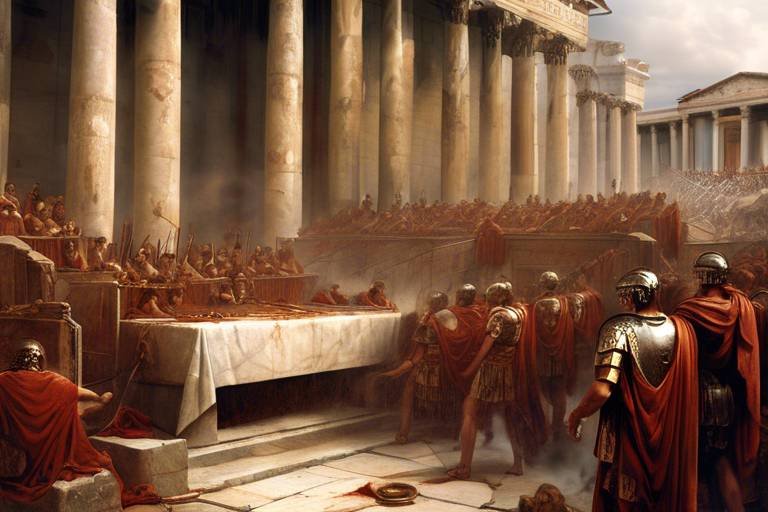The Influence of Ancient Egypt on Modern Religion
Exploring the impact of ancient Egyptian religious beliefs and practices on contemporary religions worldwide reveals a fascinating journey of cultural exchange and enduring legacy. The influence of ancient Egypt on modern religion is profound, shaping spiritual traditions in ways that continue to resonate today.

Ancient Egyptian Religious Beliefs
Exploring the impact of ancient Egyptian religious beliefs and practices on contemporary religions worldwide, highlighting the enduring legacy and cultural exchange that has shaped modern spiritual traditions.
When delving into the realm of ancient Egyptian religious beliefs, one is immediately struck by the complexity and depth of their spiritual practices. Central to their faith was the worship of multiple gods, each representing different aspects of life and nature. These deities were not distant figures but were deeply intertwined with the daily lives of the ancient Egyptians, guiding them through various challenges and blessings.
The concept of the afterlife held a significant place in ancient Egyptian beliefs. They believed in an eternal journey after death, where the soul would undergo judgment before reaching the ultimate paradise. This belief in the continuation of life beyond death influenced their funerary practices, such as mummification and elaborate tombs filled with treasures for the journey ahead.
Rituals played a crucial role in ancient Egyptian society, with ceremonies and offerings conducted regularly to honor their gods and maintain cosmic balance. From the grandeur of temple rituals to the intimate household prayers, rituals were a way for the ancient Egyptians to connect with the divine and seek guidance in their daily lives.
The intricate tapestry of ancient Egyptian religious beliefs weaves together a rich narrative of spirituality, community, and cosmic order. It is through understanding these core tenets that we can appreciate the profound influence they have had on shaping modern religious traditions across the globe.
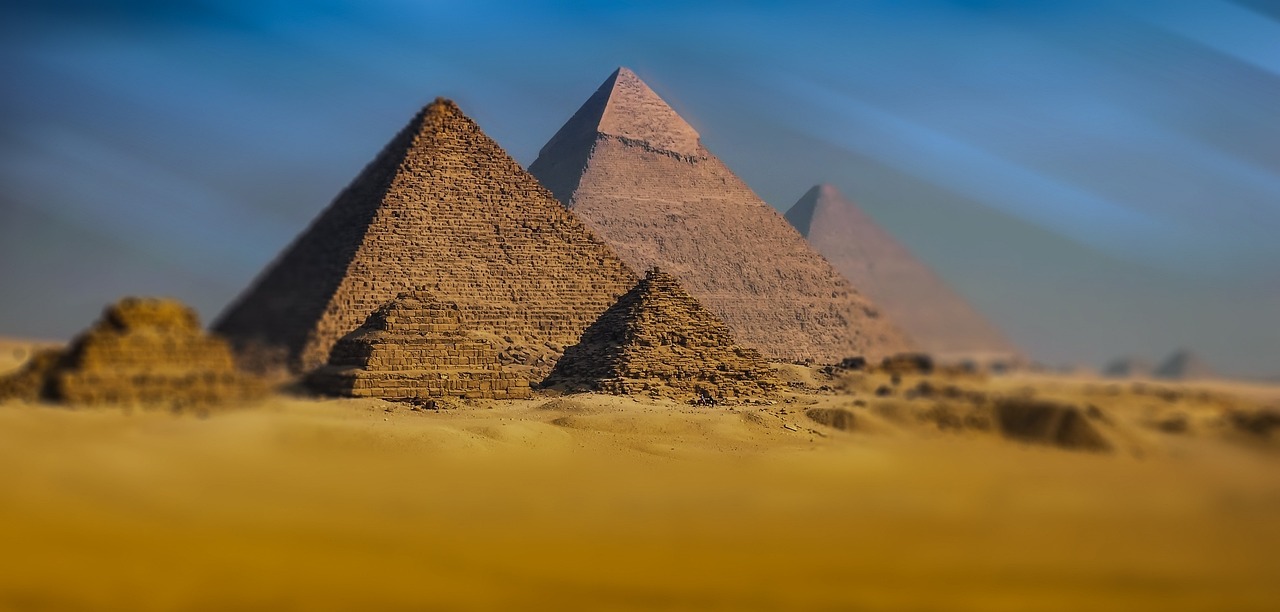
Symbolism and Iconography
Symbolism and iconography played a crucial role in ancient Egyptian religious art and architecture, conveying deep spiritual meanings and beliefs through visual representation. The use of symbols such as the Ankh, the Eye of Horus, and the Scarab beetle reflected concepts of life, protection, and rebirth. These symbols were not merely decorative but held profound significance in the religious context, symbolizing the eternal cycle of life, death, and resurrection.
A prominent example of symbolism in ancient Egyptian religion is the representation of gods and goddesses with animal heads, such as the falcon-headed Horus or the jackal-headed Anubis. These hybrid forms were not meant to be taken literally but symbolized the divine qualities and attributes associated with each deity. The intricate hieroglyphic writing system also served as a form of visual symbolism, with each symbol carrying layers of meaning and representing concepts beyond mere words.
Iconography in ancient Egyptian religious art depicted scenes from mythology, rituals, and daily life, often in a stylized and symbolic manner. The use of colors, shapes, and proportions in temple reliefs and tomb paintings was not arbitrary but carefully chosen to convey specific meanings and evoke spiritual insights. The iconic image of the pharaoh in religious art symbolized the earthly embodiment of divine authority and the link between the mortal and divine realms.
Modern religions have drawn inspiration from ancient Egyptian symbolism and iconography, incorporating elements such as the Eye of Horus or the Ankh into their own religious imagery. The enduring appeal of these symbols lies in their timeless significance and universal resonance, transcending cultural and historical boundaries to convey profound spiritual truths. By understanding the symbolism and iconography of ancient Egypt, we gain insight into the enduring power of visual language in conveying the mysteries of the divine.
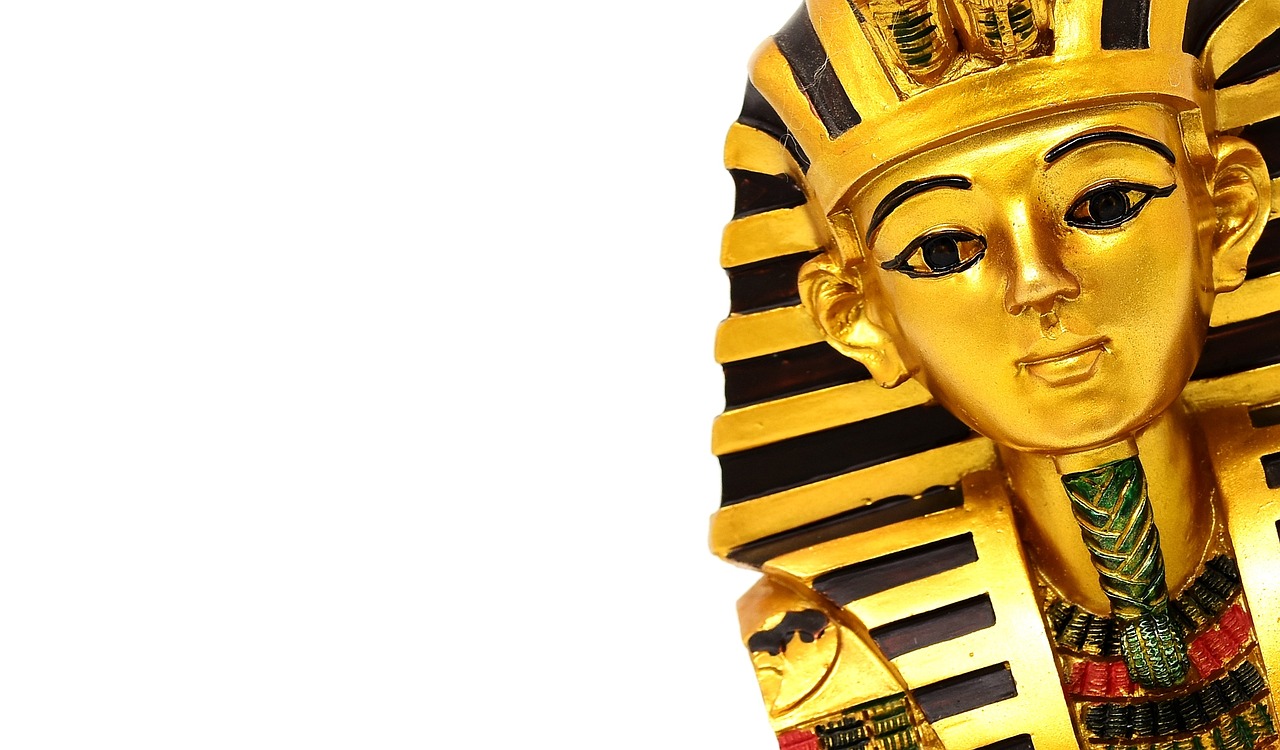
Mythology and Deities
The mythology of ancient Egypt is a rich tapestry of stories and legends that revolve around a pantheon of gods and goddesses, each with their own unique powers and domains. These deities played a central role in the religious beliefs and practices of the ancient Egyptians, shaping their understanding of the world and the afterlife.
Among the most prominent figures in Egyptian mythology are Osiris, the god of the afterlife and resurrection, Isis, the goddess of magic and motherhood, Ra, the sun god and creator of the world, and Anubis, the god of mummification and the afterlife. These deities were not just abstract concepts but were believed to actively intervene in the lives of mortals, influencing everything from fertility to the success of harvests.
The stories of these gods and goddesses were not just entertainment but served a deeper purpose, conveying moral lessons and explaining the mysteries of the natural world. For example, the myth of Osiris and Isis symbolizes the cyclical nature of life, death, and rebirth, while the journey of Ra across the sky each day represented the eternal struggle between light and darkness.
These ancient myths and deities continue to resonate in modern religious narratives, with echoes of Egyptian cosmology found in various belief systems around the world. The enduring popularity of Egyptian mythology speaks to its timeless appeal and the universal themes it explores, from the eternal battle between good and evil to the quest for immortality and spiritual enlightenment.

Rituals and Ceremonies
Ancient Egyptian religion was deeply intertwined with rituals and ceremonies that played a significant role in both spiritual and daily life. The Egyptians believed in the importance of performing specific rites to honor their gods, ensure the well-being of the deceased in the afterlife, and maintain cosmic order. One of the most well-known rituals was the offering of food and goods in temples to appease the gods and seek their favor. These offerings were believed to sustain the deities and maintain harmony in the universe. Additionally, the elaborate process of mummification, which aimed to preserve the body for the afterlife, was a crucial funerary ritual practiced by the Egyptians.
Moreover, the annual festivals dedicated to various gods and goddesses were elaborate ceremonies that involved processions, music, dance, and offerings. These festivals were not only occasions for communal celebration but also served as opportunities to reinforce social cohesion and religious beliefs. The rituals surrounding death and burial, such as the Opening of the Mouth ceremony, were essential for ensuring the deceased's successful transition to the afterlife. The symbolic gestures and recitations performed during these ceremonies were believed to empower the deceased and facilitate their journey to the realm of the gods.
Furthermore, the construction of temples and tombs was itself a ritualistic act, as these structures were considered sacred spaces where the divine and earthly realms intersected. The intricate hieroglyphs, paintings, and statues adorning these structures served as visual representations of religious beliefs and mythological narratives. The act of creating and decorating these sacred spaces was seen as a form of worship and a means of honoring the gods.
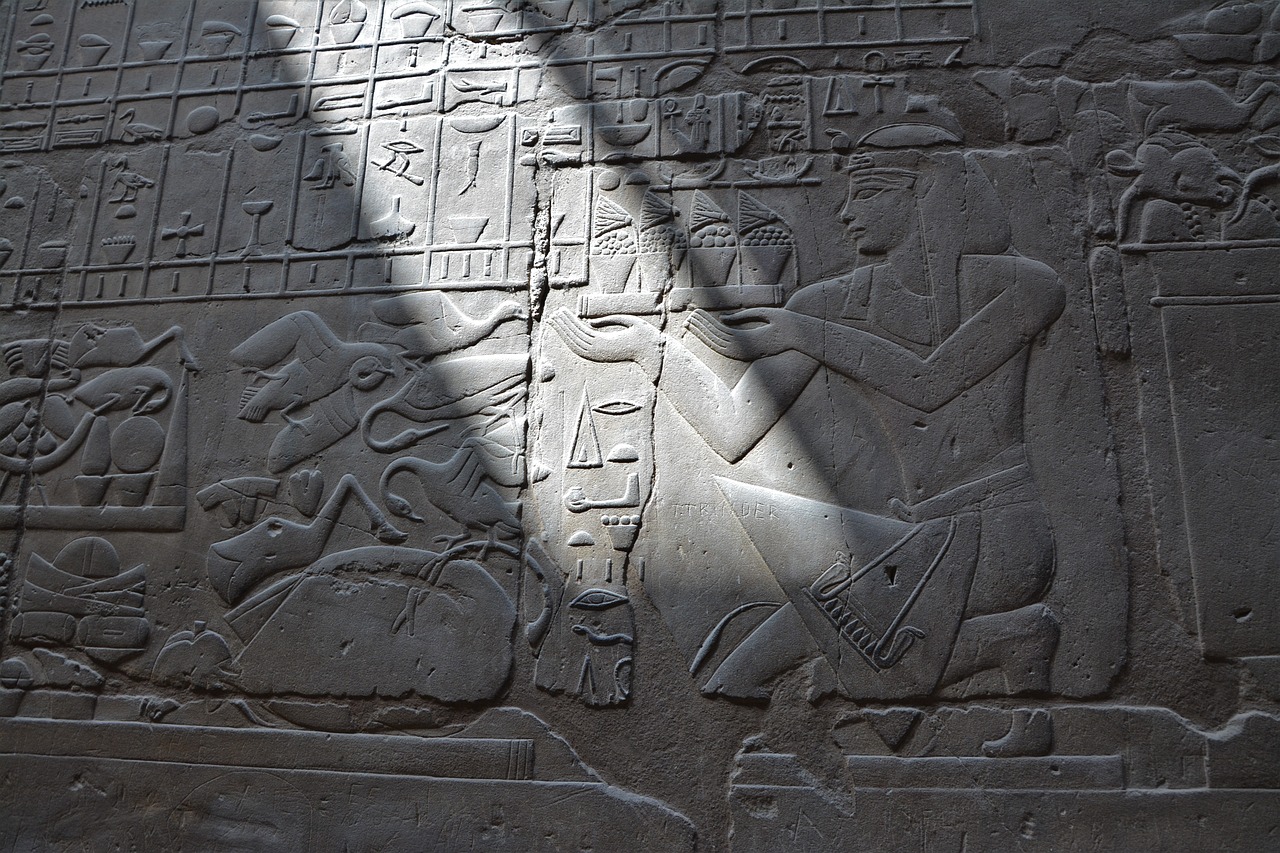
Legacy in Abrahamic Religions
Legacy in Abrahamic Religions delves into the fascinating connections between ancient Egyptian religious concepts and the evolution of Abrahamic faiths like Judaism, Christianity, and Islam. The influence of ancient Egypt on these monotheistic religions is profound and multifaceted, shaping fundamental beliefs and practices that continue to resonate in contemporary spirituality.
One of the key aspects of this legacy is the shared themes and theological influences that can be traced back to ancient Egyptian beliefs. For example, the concept of a single, all-powerful deity in monotheistic religions like Judaism and Islam may have roots in the worship of the sun god Ra in ancient Egypt. Similarly, the idea of an afterlife and judgment in Christianity and Islam bears resemblance to the Egyptian beliefs in the weighing of the heart ceremony and the journey to the underworld.
Ancient Egyptian mythology also left a lasting impact on Abrahamic religions, with figures like Osiris, the god of the afterlife and resurrection, potentially influencing the Christian narrative of Jesus' death and resurrection. The symbolism of rebirth and renewal in Egyptian mythology can be seen echoed in Christian Easter celebrations and beliefs in salvation and eternal life.
Moreover, the architectural and artistic legacy of ancient Egypt, with its grand temples and intricate hieroglyphs, may have influenced the design and symbolism of sacred spaces in Abrahamic traditions. The use of symbols like the ankh, representing life and immortality, may have found parallels in the Christian cross and Islamic calligraphy, symbolizing faith and divine presence.
Overall, the legacy of ancient Egypt in Abrahamic religions serves as a testament to the enduring power of cultural exchange and the interconnectedness of spiritual traditions throughout history. By exploring these connections, we gain a deeper understanding of the rich tapestry of beliefs and practices that continue to shape our modern religious landscape.

New Age and Esoteric Traditions
New Age and Esoteric Traditions encompass a diverse array of spiritual practices and beliefs that draw inspiration from ancient Egyptian spirituality. In these modern movements, there is a profound fascination with the mystical and symbolic aspects of ancient Egypt, often seeking to incorporate its wisdom into contemporary practices. From divination techniques like tarot card readings to energy healing modalities such as Reiki, the influence of ancient Egyptian traditions can be seen in various forms of spiritual exploration.
One of the key elements that attract individuals to New Age and Esoteric Traditions is the idea of tapping into ancient wisdom to gain a deeper understanding of oneself and the universe. Practices like crystal work, where specific gemstones are believed to hold energetic properties, are often linked back to the ancient Egyptian reverence for precious stones and their symbolic significance. This connection to the past offers a sense of continuity and a bridge to the spiritual heritage of humanity.
Moreover, the revival of ancient Egyptian rituals and ceremonies within New Age and Esoteric Traditions serves as a way for practitioners to connect with the mystical forces believed to govern the cosmos. By engaging in ceremonies inspired by ancient Egyptian practices, individuals seek to align themselves with universal energies and unlock hidden truths about existence. These rituals often involve the use of sacred symbols and incantations, drawing on the power of language and visual representation to evoke spiritual transformation.
While some critics may view the adoption of ancient Egyptian spirituality in modern contexts as a form of cultural appropriation, proponents argue that it is a way of honoring and preserving the wisdom of past civilizations. By approaching these traditions with respect and a genuine desire for spiritual growth, practitioners aim to bridge the gap between the ancient and the contemporary, creating a synthesis of timeless teachings and innovative practices.
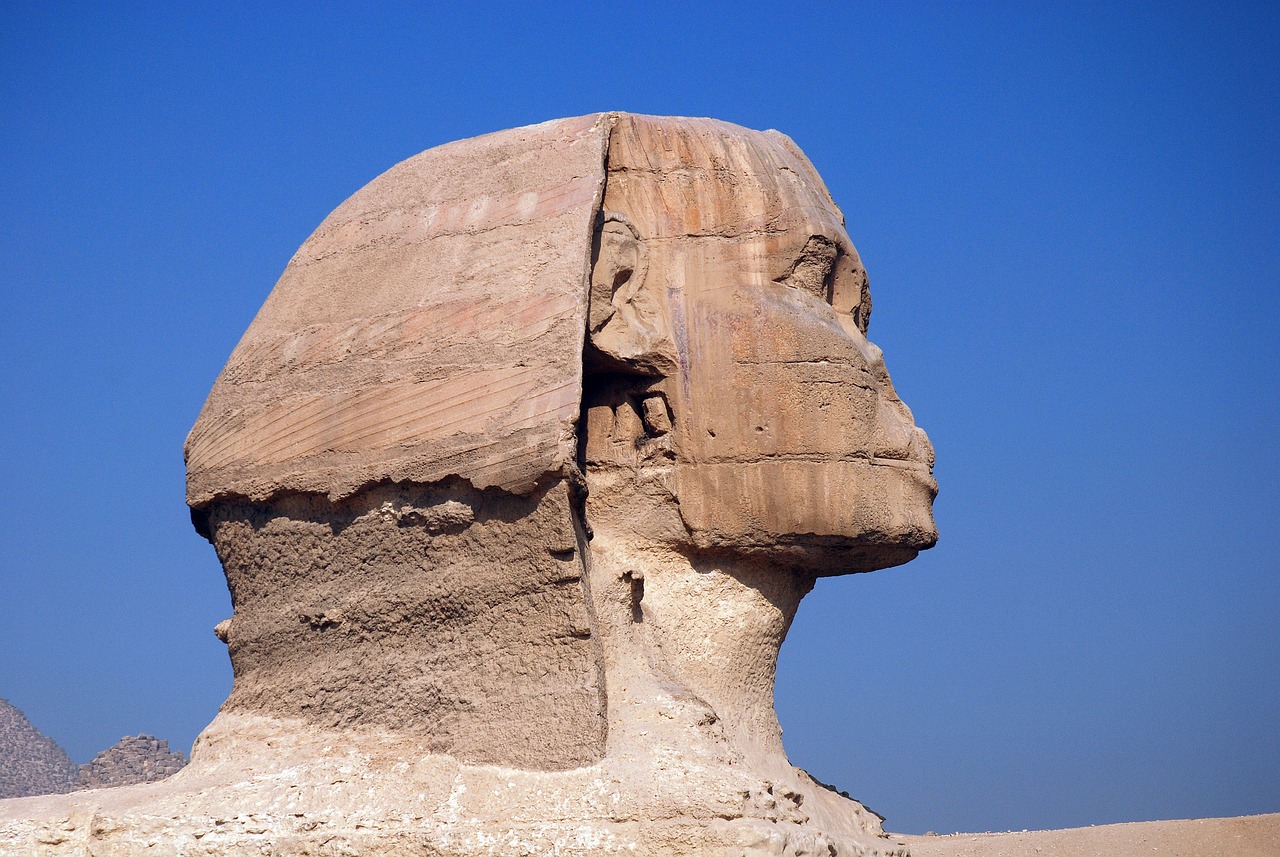
Archaeological Discoveries and Interpretations
Archaeological excavations in Egypt have unearthed a treasure trove of ancient artifacts and inscriptions that provide valuable insights into the religious beliefs and practices of the ancient Egyptians. These discoveries have allowed scholars to piece together the intricate tapestry of ancient Egyptian religion, shedding light on the rituals, ceremonies, and mythologies that shaped their spiritual worldview.
One of the most significant archaeological finds in Egypt is the tomb of Tutankhamun, discovered in the Valley of the Kings in 1922 by Howard Carter. The tomb contained a wealth of artifacts, including the famous golden death mask of the young pharaoh, offering a glimpse into the elaborate funerary practices of the ancient Egyptians and their beliefs about the afterlife.
Another remarkable discovery is the Rosetta Stone, found in 1799, which played a crucial role in deciphering ancient Egyptian hieroglyphs. This breakthrough in understanding the written language of the ancient Egyptians revolutionized the study of their religious texts and inscriptions, allowing researchers to delve deeper into their spiritual practices.
Excavations at sites like the temples of Karnak and Luxor have revealed intricate reliefs and carvings depicting scenes from ancient Egyptian mythology and religious ceremonies. These detailed artworks provide valuable clues about the gods and goddesses worshipped by the ancient Egyptians, as well as the rituals performed in their honor.
Modern technologies, such as ground-penetrating radar and 3D imaging, have enabled archaeologists to uncover hidden tombs and structures buried beneath the sands of Egypt. These cutting-edge tools have revolutionized the field of archaeology, offering new perspectives on ancient Egyptian religious practices and the significance of their sacred sites.
Interpreting these archaeological discoveries requires a delicate balance of scientific analysis and cultural understanding. Researchers must navigate the complexities of ancient Egyptian symbolism and iconography, drawing connections between the material remains of the past and the spiritual beliefs of a long-vanished civilization.

Cultural Appropriation and Respect
When delving into the realm of ancient Egyptian religious beliefs and their influence on modern spirituality, it is crucial to address the delicate issue of cultural appropriation and the importance of showing respect to the heritage of Egypt and its people. The rich tapestry of symbols, practices, and traditions that have been passed down through millennia should be approached with reverence and understanding, rather than being commodified or distorted for personal gain.
It is essential to acknowledge that the appropriation of ancient Egyptian religious symbols and practices in modern contexts can often lead to misinterpretations and misrepresentations of their original meanings. While it is natural for cultures to evolve and adapt over time, it is equally important to recognize the significance of these ancient traditions and the cultural sensitivity required when incorporating them into contemporary practices.
Respect for the cultural heritage of Egypt means honoring the origins and significance of ancient Egyptian religious beliefs, rather than cherry-picking elements for superficial or commercial purposes. By engaging with these traditions in a thoughtful and informed manner, individuals can deepen their understanding of the complexities of ancient Egyptian spirituality and contribute to the preservation of its legacy for future generations.
Frequently Asked Questions
- What were the main gods worshipped in ancient Egyptian religion?
Ancient Egyptians worshipped a pantheon of gods and goddesses, including prominent deities like Osiris, Isis, Ra, and Anubis. Each deity had specific roles and attributes, influencing various aspects of life and the afterlife.
- How did ancient Egyptians view the concept of the afterlife?
Ancient Egyptians believed in an afterlife where the soul would journey to the underworld and face judgment before reaching the eternal paradise. This belief in the afterlife influenced their burial practices, including mummification and tomb construction.
- What is the significance of symbols and iconography in ancient Egyptian religion?
Symbols and iconography played a crucial role in ancient Egyptian religious art and architecture, conveying deeper meanings and representing various gods, concepts, and rituals. These visual elements continue to inspire and influence modern religious practices and beliefs.
- How did ancient Egyptian rituals and ceremonies influence modern religious practices?
Ancient Egyptian rituals, such as temple offerings and mummification, had a profound impact on religious practices in contemporary religions. Elements like prayer, purification rituals, and ceremonial offerings can be traced back to ancient Egyptian traditions.
- What ethical considerations should be taken into account regarding the appropriation of ancient Egyptian religious symbols?
It is essential to approach the use of ancient Egyptian religious symbols with respect and understanding of their cultural significance. Cultural appropriation can be harmful, so it is crucial to appreciate and honor the heritage of Egypt and its people when incorporating these symbols into modern contexts.












